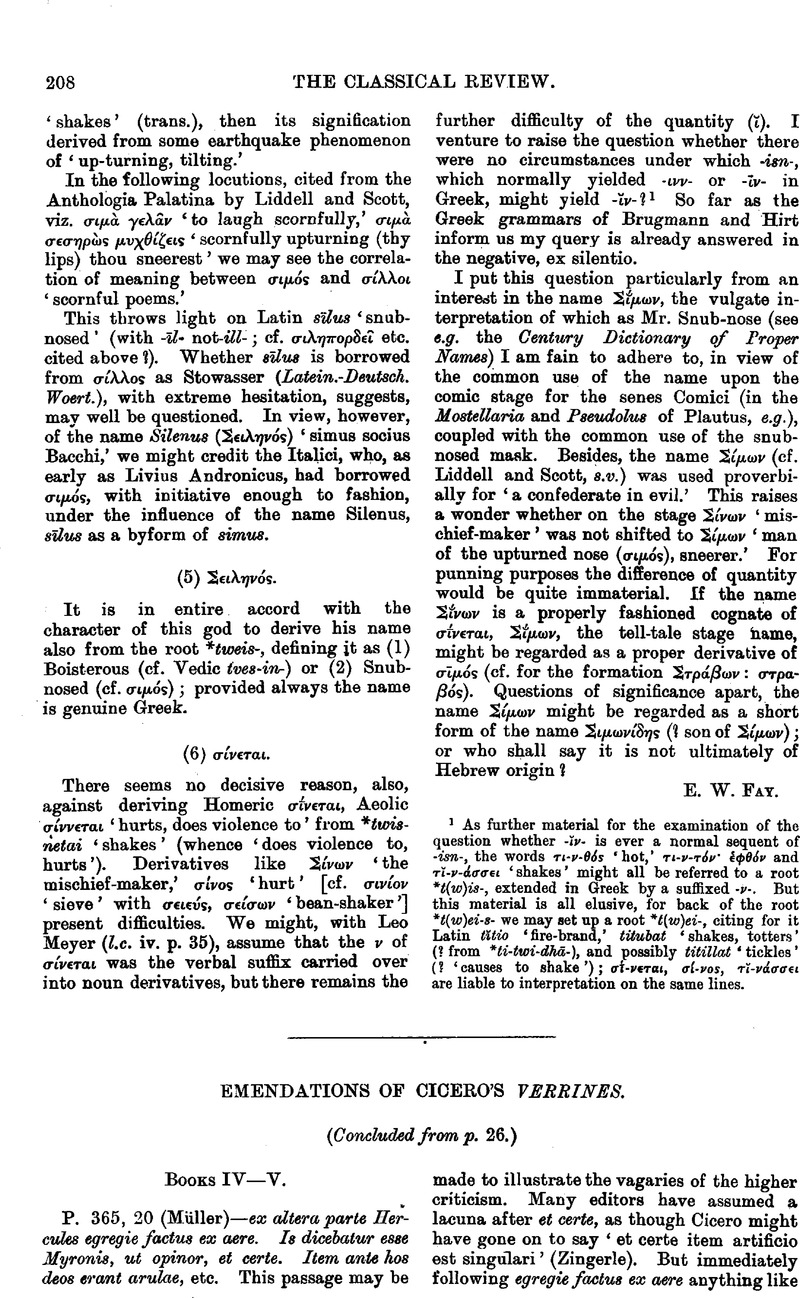No CrossRef data available.
Article contents
Emendations of Cicero's Verrines
Published online by Cambridge University Press: 27 October 2009
Abstract

- Type
- Original Contributions
- Information
- Copyright
- Copyright © The Classical Association 1904
References
1 The identity of the 9th century codex now at Holkham with No. 498 in the old catalogue of Cluni (A.D. 1158–1161) may now be taken as fully established (see vol. xvii pp. 162–4, vol. xviii, p. 23, note). Mr. A. C. Clark's forthcoming edition of the Catilines will no doubt recognize the supremacy of the Cluniacensis over all the other extant MSS. of these speeches. For the ‘Caesarian’ orations, the Holkham codex also takes first rank, and my contention that Harl. 2682 was directly derived from it seems to be borne out by the facts. Lastly, for the criticism of the Second and Third Books of the Verrines the emergence of this manuscript is of primary importance, as will shortly appear on the publication of the volume of the Oxford Classical Texts series containing these speeches. The extent to which the Cluniacensis appears to have been used by scholars of the fifteenth century (Nannius, Fabricius, Metellus) will be found duly set forth in my contribution to the Anecdota Oxoniensia series, Part ix (1901).




